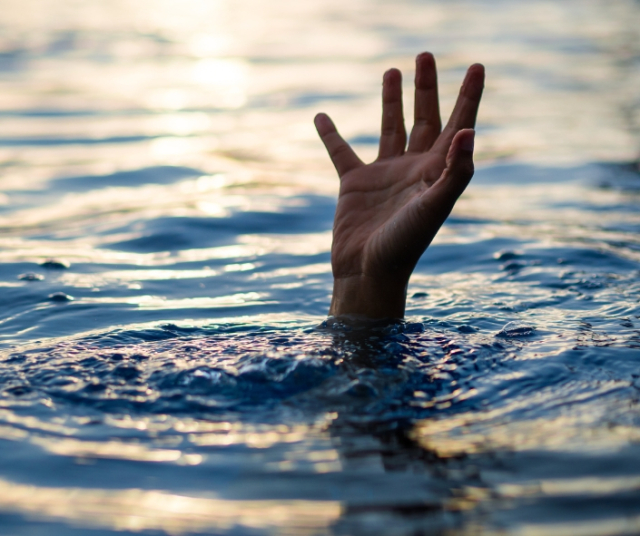Water, a source of life and recreation, can also pose a deadly danger if not handled with caution. Every year, thousands of people around the world lose their lives due to drowning incidents, a tragedy that often could have been prevented with proper awareness and education. To address this global problem, World Drowning Prevention Day was established, an initiative that seeks to highlight the importance of aquatic safety and reduce the alarming statistics of accidents in the water.
Global Drowning Statistics:
Drowning is one of the leading causes of death worldwide, affecting people of all ages. According to the World Health Organization (WHO), it is estimated that more than 320,000 people die annually from drowning, and many of these tragedies occur in unsupervised settings or in avoidable situations.
Vulnerable groups
The category of "vulnerable groups" in the context of drowning prevention encompasses a variety of individuals who, due to different factors, face an increased risk of aquatic incidents. It is crucial to closely examine these populations to develop specific strategies that address their particular needs.
Children :
Children represent one of the most vulnerable groups at risk of drowning. Little ones' natural curiosity and lack of understanding of dangers can turn even seemingly safe aquatic environments into potentially dangerous places. Swimming pools, bathtubs, and other bodies of water near homes and recreational areas are settings where children are at especially high risk. Constant supervision and early water safety education are essential to protect this group.
Youths :
Adolescents and young adults are another high-risk population. Their participation in recreational aquatic activities, such as swimming in lakes or the sea, is often carried out without a full understanding of the associated risks. Lack of swimming skills and lack of awareness of water conditions can significantly increase the likelihood of fatal incidents. It is imperative to provide swimming education programs and promote awareness of the dangers associated with aquatic activities among youth.
Old people:
Seniors face unique water-related risks due to decreased physical strength and mobility. Safety in aquatic environments, such as pools and bathtubs, is an additional concern for this demographic. Implementing specific safety measures, such as handrails and non-slip surfaces, can be crucial to preventing accidents in these facilities. Additionally, raising risk awareness and promoting safe water activity for older adults are essential aspects of any comprehensive prevention strategy.
Contributing Factors
Lack of Swimming Skills:
The inability to swim is a significant risk factor in drowning incidents. Lack of access to swim education programs can leave people without the skills necessary to deal with dangerous situations in the water.
Inadequate Supervision:
Lack of supervision, especially in environments where children are present, increases the risk of drowning. Pools without proper fencing, unsupervised lakes, and bathtubs without precautions are places where inadequate supervision can have tragic consequences.
Alcohol Consumption:
Alcohol consumption increases the risk of drowning as it can decrease danger perception and affect motor skills. The combination of water activities and alcohol is particularly dangerous and contributes to many tragic incidents.
The Role of Awareness and Education
Swimming Programs:
Encouraging participation in swimming programs from a young age is essential to providing people with the skills necessary to safely enjoy the water. Schools and communities can play a crucial role in providing access to affordable and accessible swimming lessons.
Awareness Campaigns:
Awareness campaigns play a vital role in drowning prevention by educating the public about the risks associated with water and promoting safe practices. These campaigns may include advertisements, community events, and educational resources to inform people about the importance of water safety.
Legislation and Regulation:
Implementing laws and regulations related to water safety, such as pool fencing requirements and regulations regarding alcohol consumption in aquatic environments, is critical to ensuring community safety. Local and national authorities must collaborate in the creation and application of regulations that protect the population.
Drowning Prevention Success Stories
Communities that have Implemented Effective Programs:
We will explore examples of communities that have managed to significantly reduce drowning rates through the successful implementation of education and awareness programs. These success stories offer valuable lessons that can inspire other communities to follow the same path toward aquatic safety.
Innovative Initiatives:
Innovative initiatives that use technology, social media and creative approaches will be highlighted to reach diverse audiences and effectively convey water safety messages. Adaptability to new forms of communication is essential to reach at-risk populations and foster positive change.
Challenges and Future of Drowning Prevention
Persistent Challenges:
Despite advances in awareness and education, there are persistent challenges in drowning prevention. Lack of access to resources, resistance to changing entrenched behaviors, and complacency can hinder efforts to reduce drowning rates.
Future Directions and Opportunities:
We will explore possible future directions in drowning prevention, such as using technology to improve monitoring, expanding education and awareness programs, and international collaboration to address the problem globally.
Through awareness, education and community action, we can work together to reduce the alarming statistics of drowning and ensure that water, a source of life and fun, is a safe environment for all.
